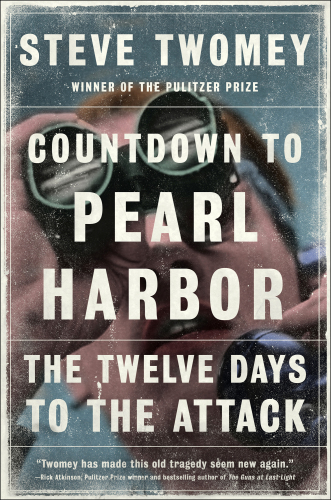
Countdown to Pearl Harbor
The Twelve Days to the Attack
کتاب های مرتبط
- اطلاعات
- نقد و بررسی
- دیدگاه کاربران
نقد و بررسی

September 26, 2016
Pulitzer–winning journalist Twomey teases readers with his subtitle before delivering a fine account of the players and events in the years leading up to the Japanese attack on Pearl Harbor. Twomey churns up plenty of minor characters and little-known incidents over the course of 16 unchronological chapters, but he emphasizes the major figures on both sides, including such star-crossed commanders in Hawaii as Adm. Husband Kimmel and Gen. Walter Short; their superiors in Washington, Adm. Harold Stark, Gen. George C. Marshall, and Pres. Roosevelt; and Japanese Adm. Isoroku Yamamoto and ambassador Kichisaburo Nomura. These are lively, astute portraits that rock no boats. No longer considered scapegoats, Kimmel and Short come across as intelligent commanders, aware that war was imminent—if only because of repeated warnings from Washington—but hampered by the widespread feeling that a Japanese attack would be suicidal and stupid. Twomey’s admiring portrait of Adm. Yamamoto is outdated: plenty of colleagues shared his reluctance to provoke the U.S., attacking Pearl Harbor did turn out to be foolhardy, and Yamamoto’s subsequent career was unimpressive. The story of Pearl Harbor has been done to death, but Twomey’s vivid work rates high nonetheless.

A highly detailed look at the tense buildup to Japan's "surprise" attack on Pearl Harbor becomes a study of how very unsurprising it really was.Moving chronologically and rendering the Japanese side of the story as well, Pulitzer Prize-winning journalist Twomey has mined the "nine official inquiries, big and small, in five years" that occurred after the attack, providing a sense of how the participants (now mostly gone) met or failed to meet the challenge of Japan's relentless bellicosity. Indeed, as the author authoritatively shows in a narrative that is fluid and only occasionally overwrought, there were numerous indications early on that Japan was planning an aggressive thrust into the South Pacific to seize crucial natural resources from the Dutch East Indies, Philippines, Malaysia, and Singapore. However, undermining the overt motivation--that the Japanese desperately needed oil after the U.S. turned off the spigot due to the empire's unwillingness to withdraw from Manchuria; that knocking out the U.S. Pacific fleet at Pearl Harbor was the only way to implement that aggressive thrust; and that the Japanese had learned the effectiveness of surprise attack 36 years before at Port Arthur in destroying the Russian navy in the Russo-Japanese War without formally declaring war--was the sheer fact of Western racism. The Americans could not fathom that the "little yellow people" had the wherewithal to carry out such a spectacular attack--certainly not without Germany's help. Underestimating the enemy and ignoring the signs of aggression--from encrypted Japanese dispatches and mail, all of which the U.S. had cracked, as well as the closing of Japanese embassies and burning of important papers--are what sank the careers of the top Navy men at the time. Staggeringly, the vast Japanese convoy, including six aircraft carriers, en route through the North Pacific for 12 days and 3,000 miles, was never detected. A well-researched study of an infamous moment that is still fascinating and controversial. COPYRIGHT(1) Kirkus Reviews, ALL RIGHTS RESERVED.

June 1, 2016
Pulitzer Prize-winning journalist Twomey presents a full chronicle of the days leading to the attack on Pearl Harbor, not shying away from all the mistakes: admirals in Washington, DC, sent a note of warning that lacks all specifics, the intelligence unit in Hawaii couldn't find Japan's biggest aircraft carriers but assumed they were resting in port somewhere, the commander in chief of the Pacific Fleet believed the harbor too shallow for torpedoes, and everyone showed racial bias by assuming that the Japanese weren't good aviators. Sounds page-turning, even if we know what happened.
Copyright 2016 Library Journal, LLC Used with permission.

























دیدگاه کاربران